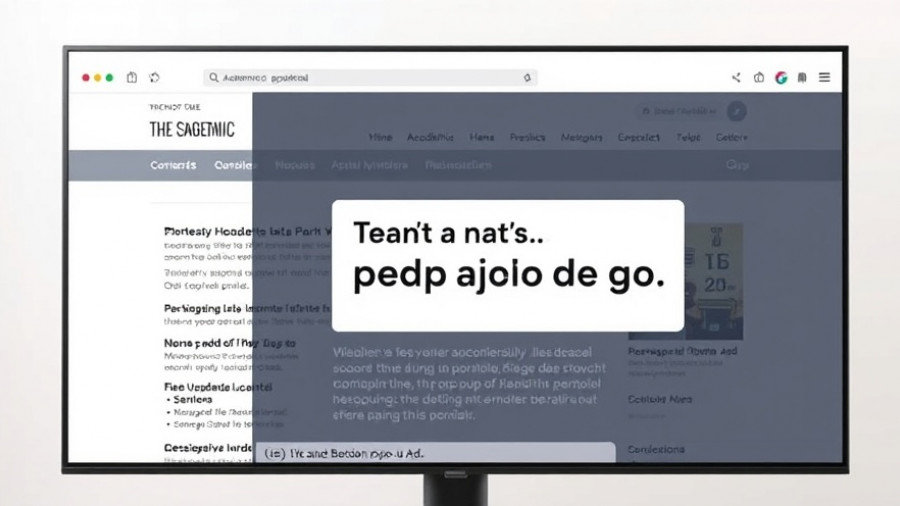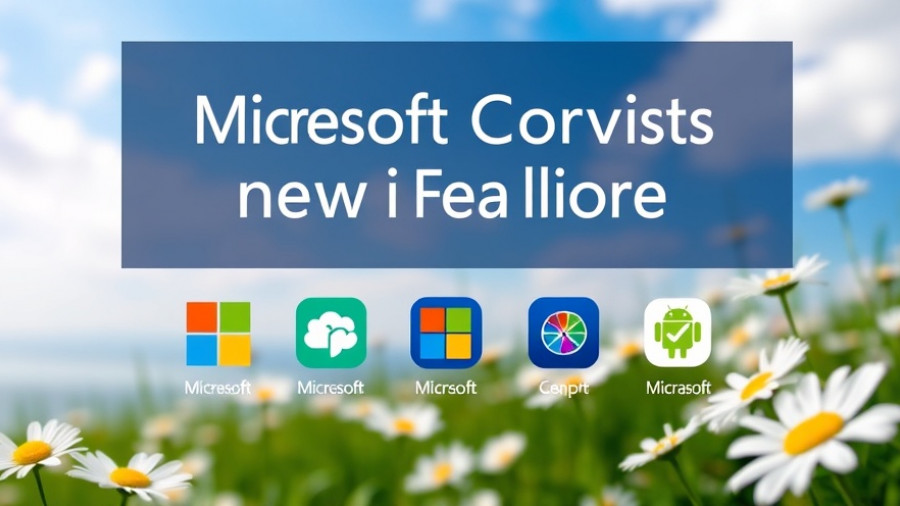
Microsoft 365 Ushering in a New Era of AI-Powered Work
On October 5, 2025, Microsoft CEO Satya Nadella unveiled a suite of significant AI innovations designed to revolutionize productivity across Microsoft 365. This introduction marks an important step in ... Microsoft’s commitment to integrating AI into the everyday workflows of users, enhancing not just efficiency, but also creativity and collaboration.
A Deep Dive into the Innovations
Among the five key innovations highlighted by Nadella was the introduction of Excel Agent Mode, which transforms Excel into an even more powerful tool by allowing users to issue commands directly within their spreadsheets. This efficiency is crucial for professionals who rely on data and need to derive insights quickly. The collaborative aspect of tools like Teams with multiplayer AI experiences is also noteworthy. These innovations allow team members to leverage AI in real-time, aiding in seamless communication.
How AI Fits into Today's Workflow
In his announcement, Nadella emphasized the concept of a 'model-forward' approach. By this, he refers to utilizing various models, including those from OpenAI and Anthropic. This flexibility allows users to select the most appropriate AI tool for their specific task, thereby maximizing productivity. The integration of GitHub functionalities directly into Teams highlights a shift towards making coding more accessible and integrated into daily discussions, a significant advantage for software teams.
Price and Value of Microsoft 365 Premium
This announcement coincided with the launch of Microsoft 365 Premium, a subscription plan priced at $19.99 per month. This plan merges the best features of Microsoft 365 Family and previous Copilot offerings, providing users with greater value at a competitive price point. Additionally, it includes advanced AI features and higher usage limits, signaling Microsoft's aim to create a long-term AI-centric suite.
The Future of AI in Productivity Tools
As AI continues to evolve, there is little doubt that tools like Microsoft 365 will play an essential role in transforming work environments. Nadella's insights suggest a future where AI is not just an added feature, but an integral component of all aspects of productivity software. This indicates a strategic pivot in the way technology companies are developing their products – not merely to enhance user experience but to fundamentally change how tasks are accomplished.
Implications for Users and Organizations
For many users, especially businesses, embracing these new tools could lead to unprecedented improvements in productivity and team collaboration. However, these advancements also raise questions about dependency on technology and the need for user training. As organizations adopt these cutting-edge technologies, the focus will shift towards how to effectively integrate AI into their existing processes.
Conclusion and Next Steps
As Microsoft continues to refine its offerings, current and prospective users should remain vigilant about potential upgrades and features that can positively impact their work. By understanding the capabilities of Microsoft 365 Premium and the tools available through AI, users can position themselves to fully utilize these advancements. This is the time to explore how AI can transform your workflow and improve productivity.
 Add Row
Add Row  Add
Add 




Write A Comment